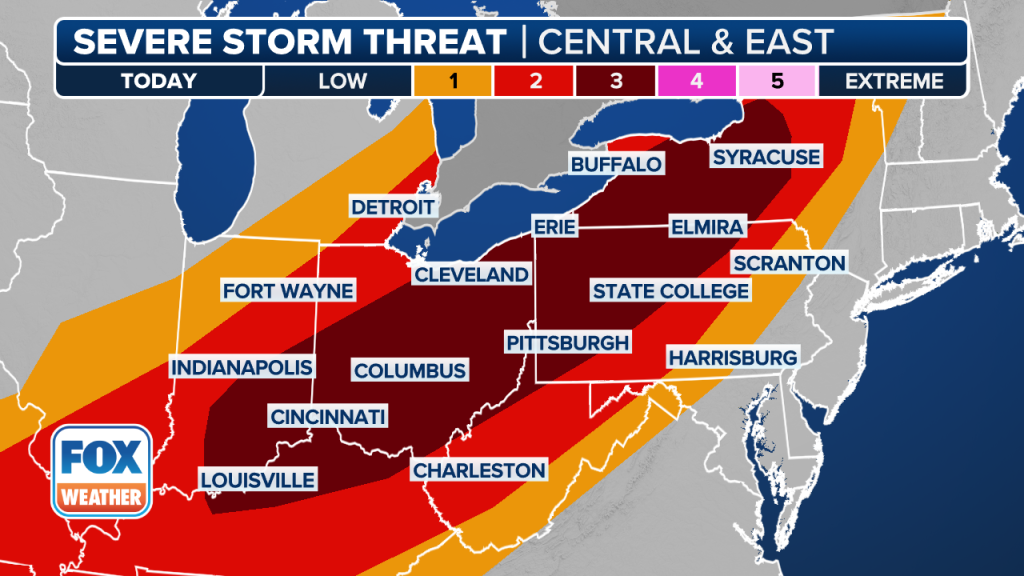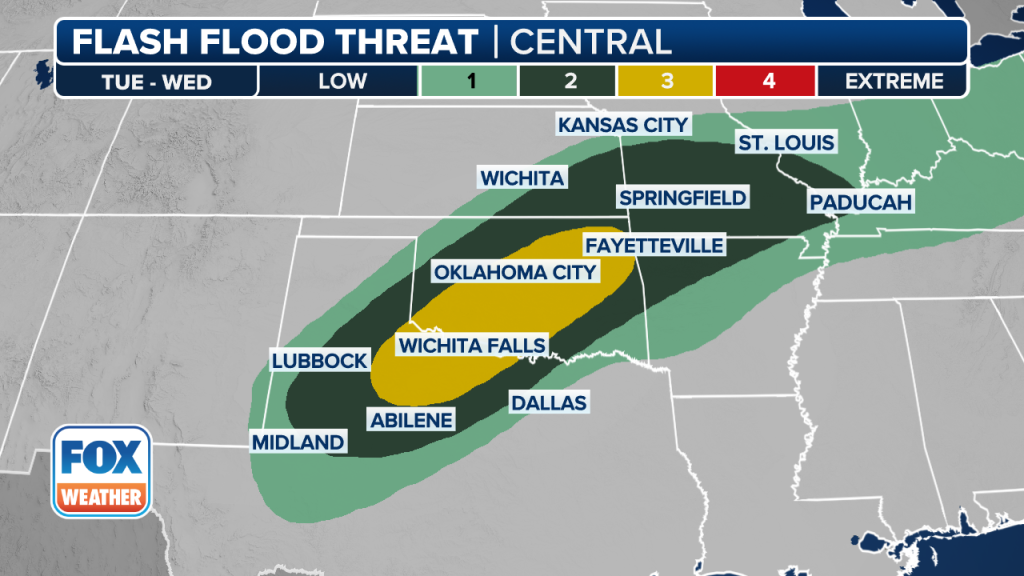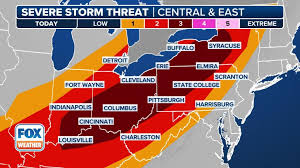A massive storm system is sweeping across the United States, with FOX Weather Alert issuing an urgent alert for severe weather spanning over 2,000 miles. From the Northeast down to Texas, this threat is set to bring dangerous conditions, including heavy rain, strong winds, hail, and the potential for tornadoes.
Residents in affected regions are urged to stay vigilant and prepare for possible disruptions. With such a wide area impacted, this storm has the potential to cause widespread damage, impacting travel, power lines, and daily activities.
Stay tuned to FOX Weather Alert for the latest updates on this powerful and unpredictable weather event as it continues to develop and move across the country.
Read More: FOX Weather Alert: 2,000-Mile Severe Storm Threat From Northeast to Texas
Severe weather threat charges east, stretching 2,000 miles from New York to Texas
A formidable weather system, which unleashed severe storms across the central U.S. on Sunday and Monday, is now advancing eastward, extending a 2,000-mile risk zone from New York to Texas on Tuesday.
The primary areas of concern will be from Indiana and Ohio through central New York, with additional heightened risks in West Texas and southwestern Oklahoma.

The National Oceanic and Atmospheric Administration’s Storm Prediction Center has issued a Level 3 risk on its 5-point severe thunderstorm scale, highlighting the potential for damaging winds, hail, and tornadoes in these regions.
Residents across the affected areas are advised to remain alert as the storm system progresses.
Flash Flood Risk Intensifies Across the Plains
Severe storms sweeping through the Plains are poised to deliver significant flash flooding from the Texas-Oklahoma Red River Valley into the Ozarks and lower Missouri Valley through Wednesday.
Forecast models indicate rainfall totals between 3 to 5 inches, with the greatest risk expected Tuesday night as slow-moving thunderstorms repeatedly impact the same locations.

The National Weather Service has issued a Level 3 out of 4 flash flood threat for portions of Texas, Oklahoma, western Arkansas, and southern Missouri. Residents in the affected areas are urged to monitor local forecasts closely and prepare for rapidly changing conditions that may lead to dangerous flooding.
Severe Storms Batter Central U.S. with Hurricane-Force Winds and Large Hail
A volatile line of powerful thunderstorms tore through the central United States from the Plains to the Upper Midwest Monday evening into early Tuesday morning, delivering damaging impacts across multiple states.
Although the region avoided a widespread tornado outbreak, the storms packed a serious punch—producing hurricane-force wind gusts, torrential rainfall, and hailstones as large as teacups.
The most significant threats stemmed from these intense winds and large hail, which caused property damage, downed trees, and power outages. Emergency management officials continue to assess the damage as the storm system shifts eastward.
Frequently Asked Questions (FAQs)
What areas are currently under the greatest severe weather threat?
The highest risk zones stretch from central New York through Indiana and Ohio, with an additional elevated threat in West Texas and southwestern Oklahoma.
How severe is the current flash flood risk?
The National Weather Service has issued a Level 3 out of 4 flash flood threat for parts of Texas, Oklahoma, western Arkansas, and southern Missouri due to the potential for 3–5 inches of rain and slow-moving storms.
What kind of weather conditions are expected?
Residents can expect strong winds (potentially hurricane-force), large hail, flash flooding, and periods of heavy rainfall. Tornadoes, while not widespread, are also possible.
When will the worst of the storm activity occur?
The most intense storm activity is expected Tuesday night into early Wednesday morning, especially in areas prone to repeated thunderstorm development.
How can I prepare for the severe weather?
Stay informed by monitoring weather alerts from trusted sources like FOX Weather and the National Weather Service. Prepare emergency kits, charge devices, secure outdoor items, and review safety plans.
Will travel be affected by these storms?
Yes. Expect delays or cancellations due to flooding, reduced visibility, and hazardous driving conditions. Always check road and flight statuses before traveling.
Conclusion
The 2,000-mile severe storm threat stretching from the Northeast to Texas underscores the scale and intensity of this powerful weather system. With regions across the Eastern and Central U.S. facing the risk of damaging winds, large hail, flash flooding, and isolated tornadoes, it’s a clear reminder of nature’s unpredictability.

